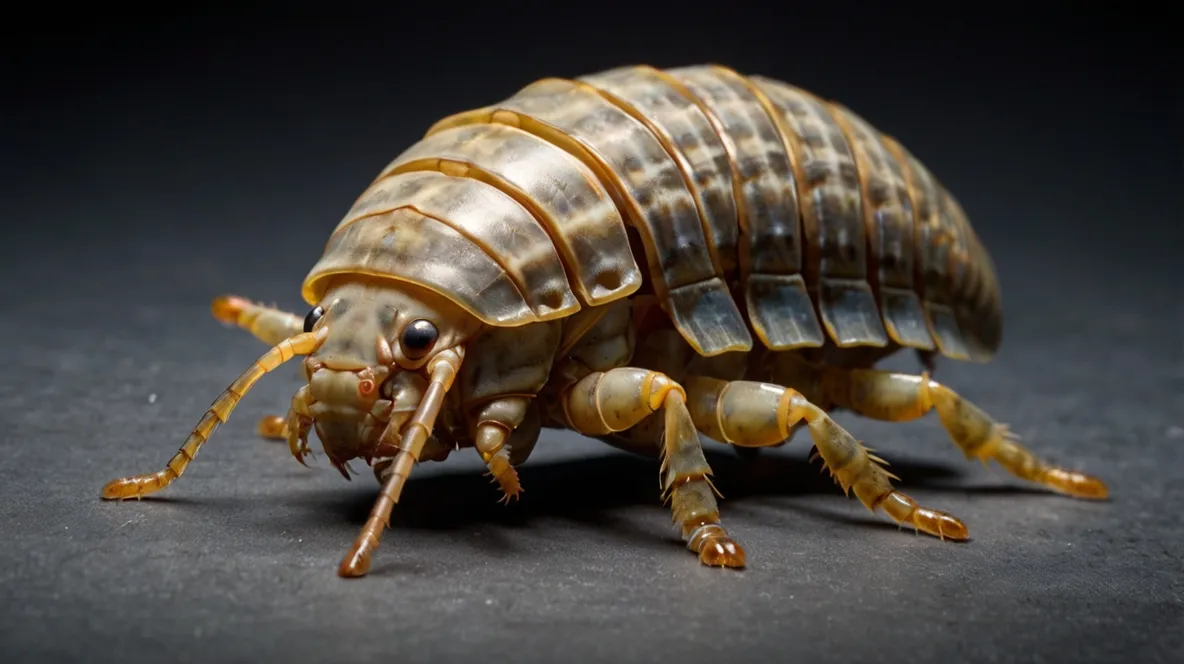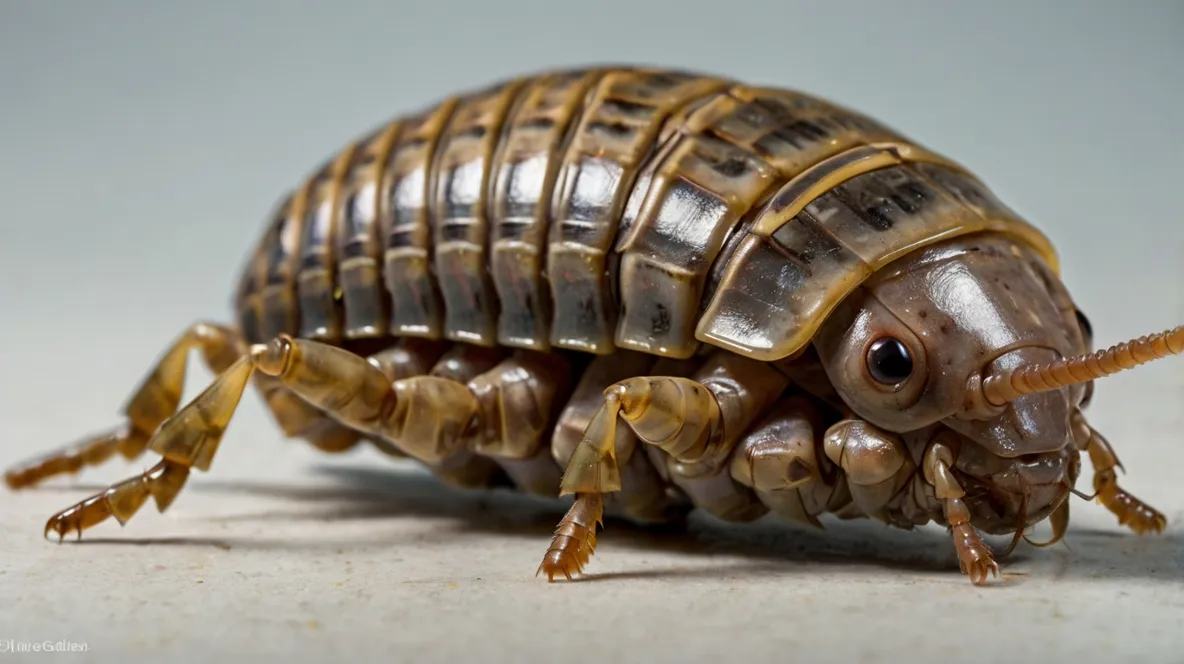Isopod Colony Health & Troubleshooting Guide
Understanding Isopod Colony Health
Isopods (terrestrial crustaceans like pill bugs and sow bugs) are popular as display pets and bioactive cleanup crews. Colony health depends on maintaining the correct environmental parameters: humidity gradient, ventilation, temperature, substrate, and diet. Issues usually manifest as colony decline (die-offs) or failure to thrive/reproduce rather than individual “illness.” Veterinary care is non-existent; focus is entirely on husbandry and prevention. This guide addresses common colony health problems based on hobbyist knowledge.

Common Isopod Colony Problems
Addressing husbandry is key to resolving most issues.
- Colony Die-off / Failure to Thrive: Gradual or sudden death of multiple isopods, lack of reproduction. This is a symptom with many potential causes.
- Potential Causes: Incorrect humidity (too wet/stagnant or too dry), poor ventilation leading to CO2 buildup or mold, wrong temperature (too hot or too cold), inadequate diet (lack of calcium, protein, or decaying wood/leaves), substrate issues (wrong type, too shallow, contaminated), pesticide/chemical exposure, overcrowding.
- Troubleshooting: Review husbandry meticulously. Check humidity gradient (provide distinct wet and dry areas). Ensure good cross-ventilation. Verify temperature is within species range. Offer varied diet (leaf litter, decaying wood, calcium source like cuttlebone/limestone, protein source like fish flakes/dried shrimp supplement). Ensure substrate is appropriate and deep enough. Rule out chemical contamination (substrate source, nearby aerosols). Divide colony if overcrowded.
- Molting Issues / Stuck Molt: Isopods molt in two halves. Difficulty shedding can occur, often related to humidity.
- Symptoms: Isopod partially stuck in shed, lethargic during molt, death during molt.
- Prevention: Maintain proper humidity gradient – crucial is a moist area (e.g., under bark/moss) where they can retreat to molt safely. Ensure calcium is available for exoskeleton development.
- Note: Direct intervention is not possible. Focus on providing the right environment.
- Mold Outbreaks: Excessive fuzzy mold growth in the enclosure, often white or greenish. Can outcompete isopods for food or indicate overly wet/stagnant conditions.
- Symptoms: Visible mold growth on substrate, wood, or food items. Sometimes associated with bad odor.
- Prevention: Ensure good ventilation. Avoid over-misting or creating constantly waterlogged substrate. Introduce springtails (collembola) – they often help control mold by eating spores and waste. Remove uneaten food (especially protein) promptly. Use mold-resistant materials (cork bark).
- Treatment: Manually remove visible mold patches. Increase ventilation. Reduce misting frequency or amount. Introduce/boost springtail population. If severe, may require substrate change.
- Pest Infestations (Fungus Gnats, Mites): Fungus gnats are common, attracted to moist substrate; larvae feed on fungi/roots. Mites are usually harmless grain/soil mites attracted to food/waste, but some predatory mites could potentially harm mancae (baby isopods).
- Symptoms (Gnats): Small flying insects in/around enclosure; tiny larvae in substrate.
- Symptoms (Mites): Tiny moving dots on substrate, food, or sometimes isopods (usually harmless soil mites unless positively ID’d as parasitic).
- Prevention: Allow substrate surface to dry slightly between waterings (discourages gnats). Use clean substrate/materials. Quarantine new additions. Don’t overfeed. Springtails help outcompete pests for resources.
- Treatment: Yellow sticky traps outside enclosure for adult gnats. Introducing predatory mites (Hypoaspis miles) can control gnat larvae and some other mites. Avoid pesticides entirely. Manual removal/cleaning for severe mite outbreaks on surfaces.
- Lack of Reproduction: Healthy colony not producing offspring (mancae).
- Potential Causes: Incorrect temperature (too cold often slows reproduction), inadequate diet (especially lack of protein or calcium), insufficient humidity or drying out completely, stress from overcrowding or frequent disturbances, colony too young or too old (less likely for entire colony), insufficient number of individuals.
- Troubleshooting: Verify all husbandry parameters are optimal for the species. Ensure a varied diet with consistent calcium and supplemental protein. Provide security (hides, deep substrate). Minimize disturbances. Ensure colony has enough individuals to establish.
- Cannibalism: Isopods eating each other, especially targeting molting individuals or mancae.
- Potential Causes: Primarily lack of protein in the diet. Also overcrowding or general stress.
- Prevention: Provide sufficient supplemental protein regularly (e.g., fish flakes, dried shrimp, specialized isopod diets). Ensure adequate space and hides. Maintain stable conditions.
- Chemical Toxicity: Exposure to pesticides (from substrate, leaves, wood, or external sources), cleaning chemicals, aerosols.
- Symptoms: Sudden mass die-offs, twitching, paralysis.
- Prevention: Use organic, pesticide-free substrate, leaves (boil/bake first if collected), and wood. Avoid any chemical sprays near the enclosure. Wash hands before maintenance if handled chemicals.
- Note: Usually catastrophic and untreatable. Requires complete teardown, disinfection, and restart with new substrate/materials if cause is identified.
Key Husbandry for Thriving Isopod Colonies
Maintaining balance is key to isopod success.

- Humidity Gradient: CRITICAL. Provide a distinct damp area (e.g., sphagnum moss over moist substrate) and a drier area with leaf litter. Allows isopods to self-regulate moisture needs.
- Ventilation: Essential to prevent stagnant air, CO2 buildup, and excessive mold. Amount depends on species and ambient humidity (more ventilation for humid species often needed). Cross-ventilation is ideal.
- Substrate: Use a suitable mix (e.g., organic topsoil, coco fiber, peat moss, crushed limestone) amended with decaying wood and leaf litter. Depth should allow burrowing (minimum 2-3 inches).
- Diet: Primary food is decaying hardwood leaves (oak, maple are favorites) and rotting wood. Supplement with calcium (cuttlebone, crushed eggshell, limestone) available at all times. Offer protein source (fish flakes, dried shrimp, yeast, specialized diets) 1-2 times per week sparingly.
- Temperature: Most species thrive at room temperature (70-78°F). Avoid extremes.
- Hides & Cover: Provide lots of leaf litter, cork bark, or seed pods for security and microclimates.
- Springtails: Highly recommended cohabitants. They help control mold and consume waste.
- Quarantine: Isolate new isopods and materials (leaves/wood) before adding to established colonies or bioactive tanks.
General Signs of an Unhealthy Isopod Colony
Monitor the overall colony activity and environment:
- Significant number of dead isopods
- Lack of mancae (babies) in an established colony
- Isopods constantly on surface, avoiding substrate
- Isopods congregating only in one small area (may indicate rest of enclosure is unsuitable)
- Excessive mold growth
- Presence of numerous pests (gnats, harmful mites)
- Lethargic or slow-moving isopods
- Frequent failed molts
- Unpleasant odor from enclosure (ammonia, decay)
Finding Help & Resources
The isopod keeping community is the primary source of support.
- Veterinary Care: Not applicable for isopods.
- Online Communities: Facebook groups (many dedicated isopod groups), Reddit (r/isopods), and forums like Arachnoboards (has an isopod section) are excellent resources.
- Experienced Breeders/Sellers: Reputable sellers often have extensive knowledge and can offer advice specific to the species they work with.
- Provide Context: When seeking help, detail your setup: species, enclosure size, substrate composition/depth, ventilation type/amount, temperature, humidity gradient method, diet details (leaves, supplements), and description/photos of the problem.
Husbandry First, Always: Nearly all isopod colony issues trace back to an imbalance in their environment or diet. Systematically review and adjust humidity, ventilation, temperature, substrate, and food sources based on reliable species-specific information before assuming disease. Patience is key; colonies take time to establish and recover.